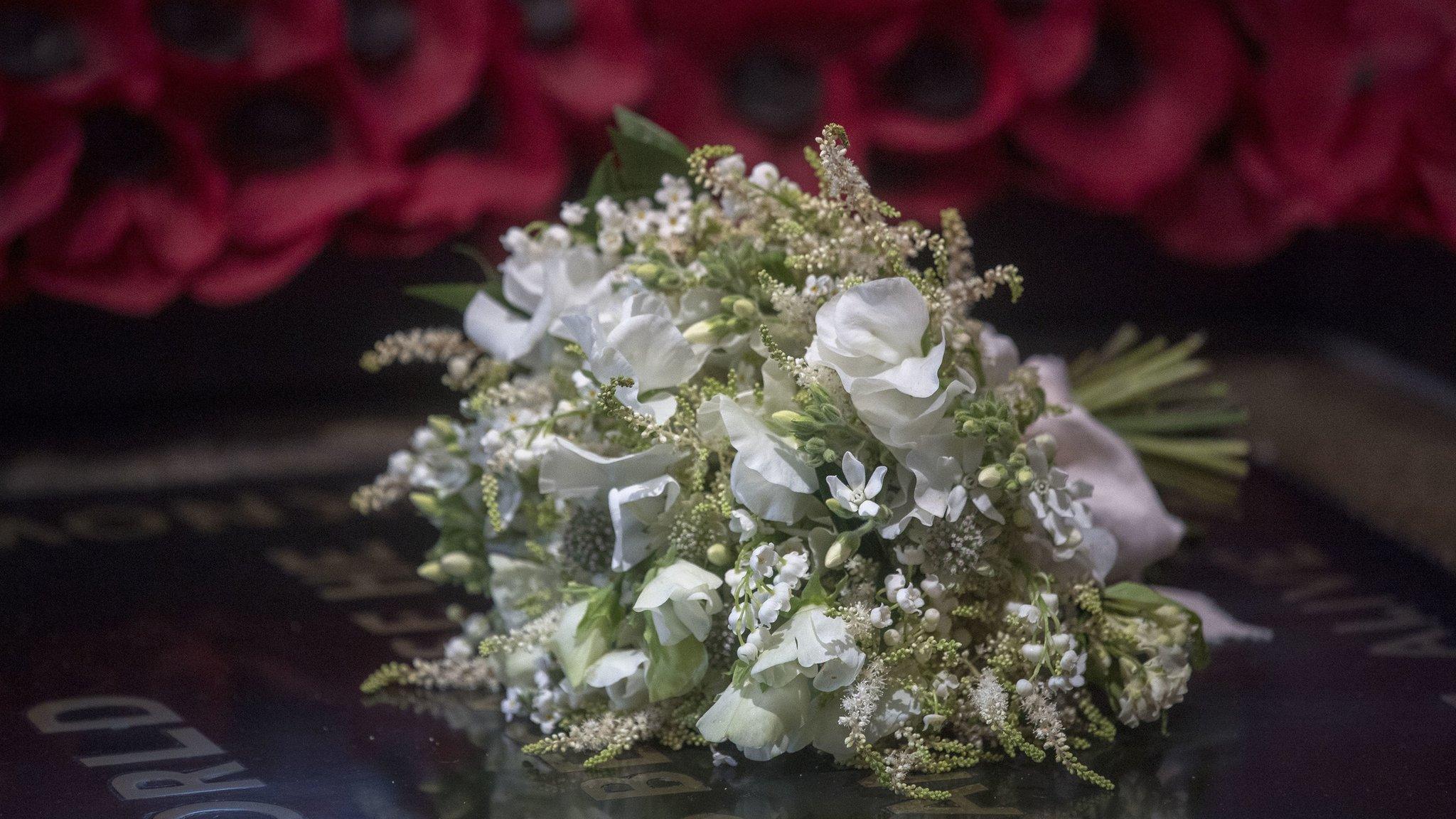How the unknown warrior came to Westminster Abbey
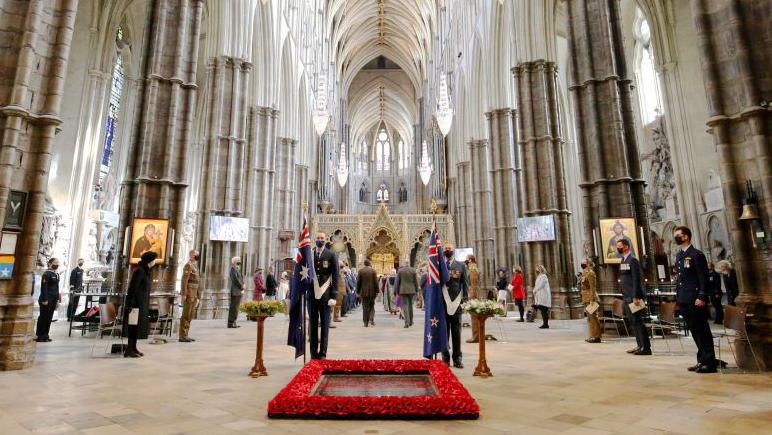
The unknown warrior is buried in Westminster Abbey
- Published
At the western end of the nave of Westminster Abbey is a black Belgian marble stone on top of a grave that conceals a coffin containing a body once buried in France during World War One.
Set among those of monarchs, writers, poets and scientists, the grave serves as a poignant reminder of those who never came back from the Great War and is the subject of The Unknown Warrior, a book by author and former RAF Tornado navigator John Nichol.
Nichol admits he had never really thought about the tomb of the unknown warrior much previously, despite attending several services at the abbey over the years.
However, at one such service in July 2018 the author, who served in the RAF for 15 years including in the Gulf War, says he suddenly felt a connection between it and his own experiences of battle.
“This humble unknown warrior is challenging me to connect the two; to join the dots between our lives today and all those innocent young men blown to fragments.
"So many names without bodies. So many bodies without names,” he says.
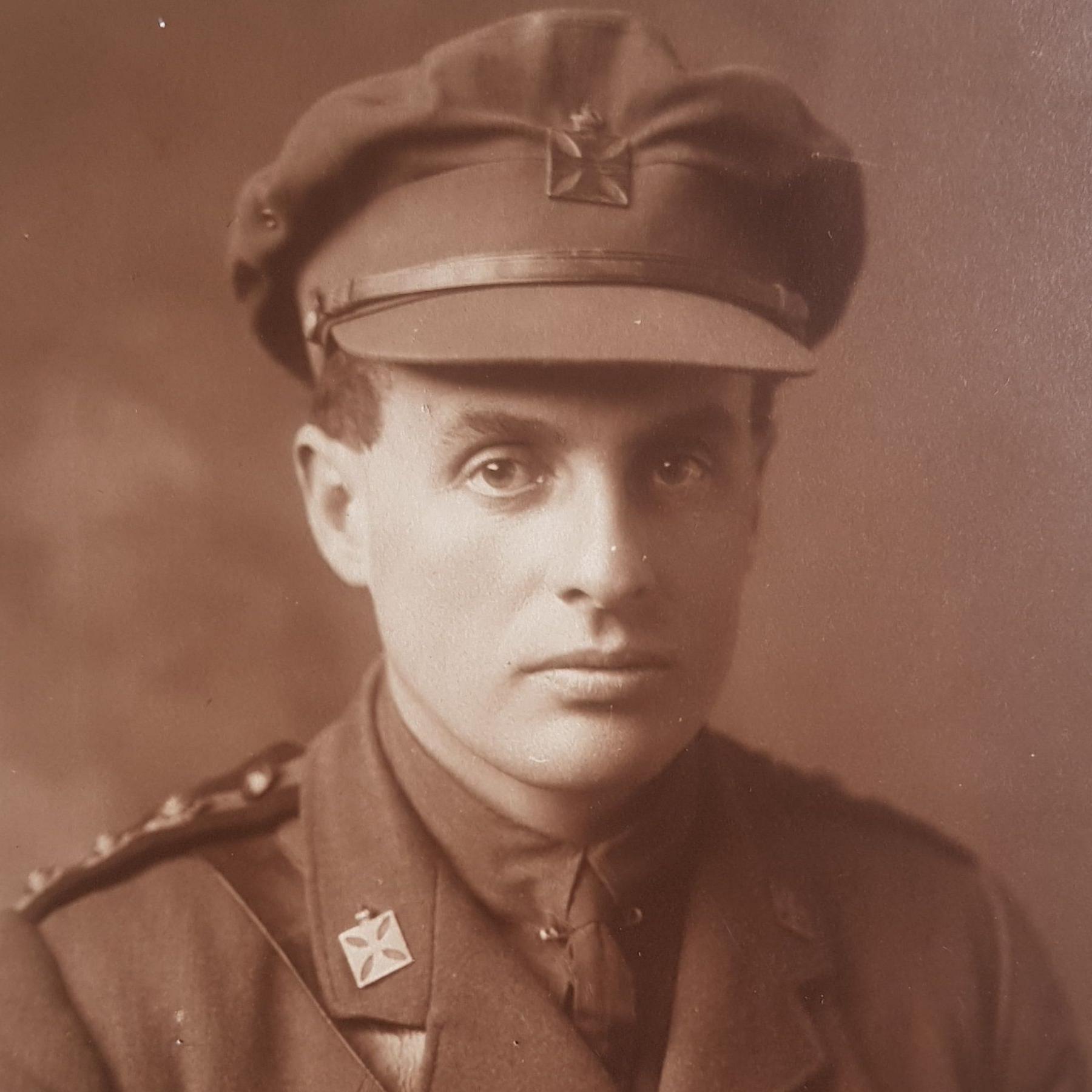
The Reverend David Railton was an Army chaplain during World War One who provided spiritual support to soldiers in battle
Creating the tomb was the idea of a man who was at the centre of the action during World War One – army chaplain the Reverend David Railton.
During the war while in a back garden at Erkingham, near Armentières in northern France, Railton noticed a grave with a rough cross on which the words “An Unknown British Soldier” were pencilled.
Fighting during World War One was characterised by trench warfare, the use of machine-guns, artillery and chemical weapons, with those who died in action often hurriedly buried in makeshift graves where they fell.
The nature of their injuries also meant bodies were badly disfigured, making it difficult to identify them, while the lack of a body made it harder for many of those at home to mourn them.
“Month after month, year after year, as the war rumbled on Railton therefore privately nurtured his idea,” Nichol explains.
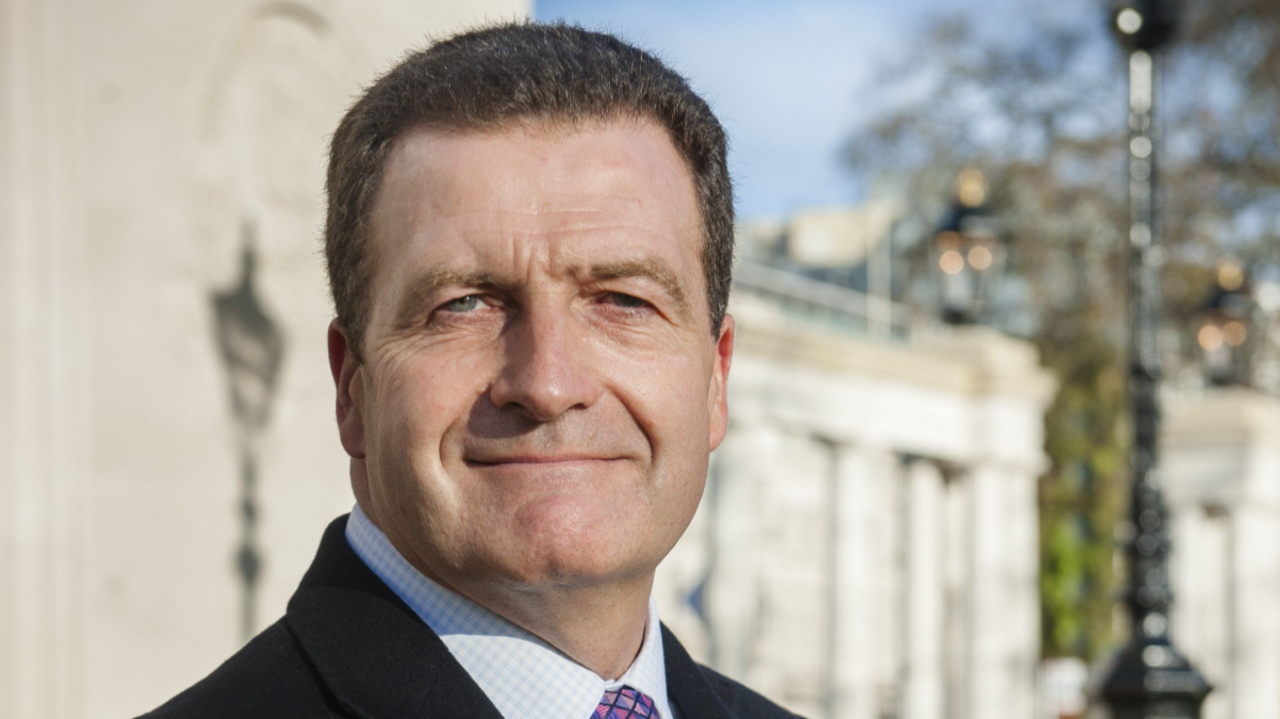
John Nichol served with the RAF for 15 years
Once back home in 1919, Railton gained the support of the Dean of Westminster Abbey, the Right Reverend Herbert Ryle, with one of the conditions for an anonymous grave being that “no-one shall know to which branch of the services the unknown warrior belonged”.
The following year King George V and the Prime Minister David Lloyd George also gave their support and in October 1920 the process began to select a body to become the unknown warrior, with four thought to have initially been exhumed from battlefields at Aisne, Somme, Arras and Ypres.
The bodies were placed in the chapel at the British army HQ in France, in St Pol sur Ternoise in the Pas de Calais, on 8 November 1920 before a casket was sent to the country to carry one of them back to Britain where it was placed on a train to Victoria. The other three bodies were reburied.
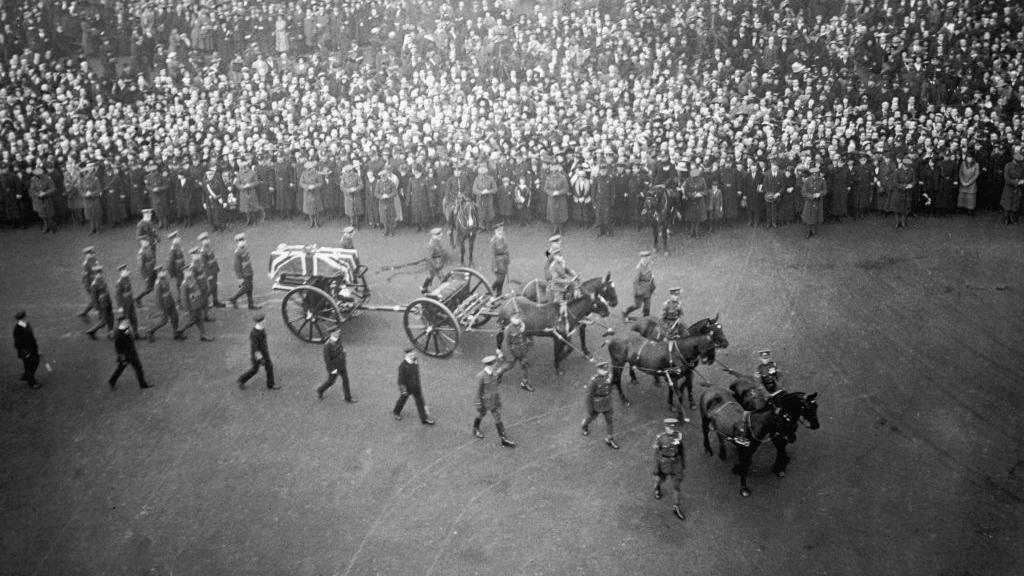
The coffin of the unknown warrior was carried on a gun carriage through London to his final resting place
In London on 11 November - Armistice Day - the coffin of the unknown warrior was placed on a gun carriage, covered with a union jack and pulled through the streets of Westminster, past the Cenotaph that had been unveiled that day, and on to its final resting place, Westminster Abbey.
A grave had been dug inside the abbey close to the Great West Door. The spot was near the resting place of Edward the Confessor, Elizabeth I and Geoffrey Chaucer - to name a few - and following the burial it was finished off with the memorial stone.
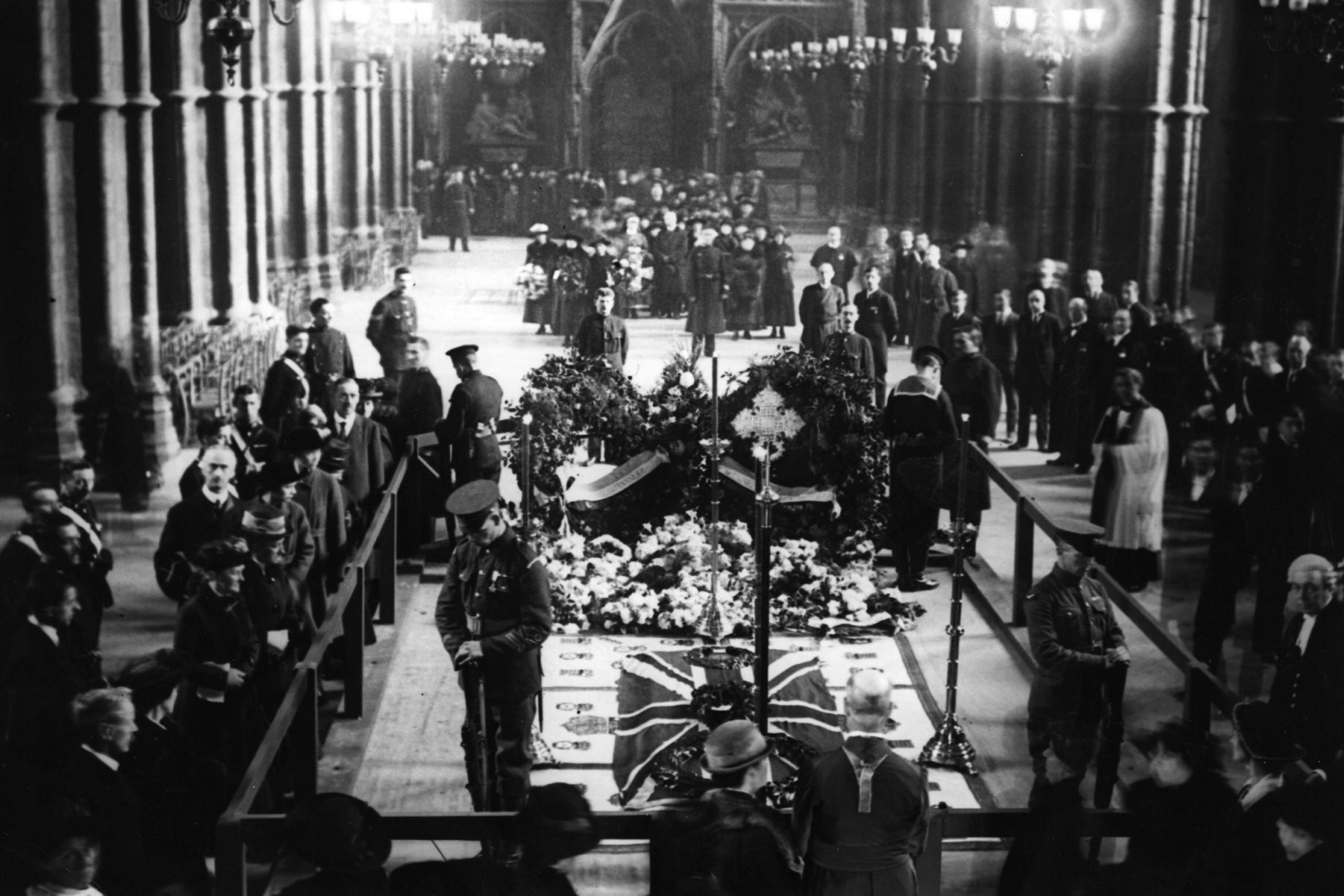
The unknown warrior was buried on 11 November 1920
The memorial is known as the tomb of unknown warrior, rather than the unknown soldier, as it is meant to be a symbol of all three armed services.
“It really didn’t matter who he was, his colour, service or religion, the person [buried] would be an everyman,” says Nichol.
“Grieving mothers needed to believe that the unknown warrior really could be their son.
“It was Padre David Railton’s deep understanding of the need for a symbol, for answers, that national yearning for closure, that impelled him to act. To give one of the dead – and thus every one of the dead – a proper resting place.”
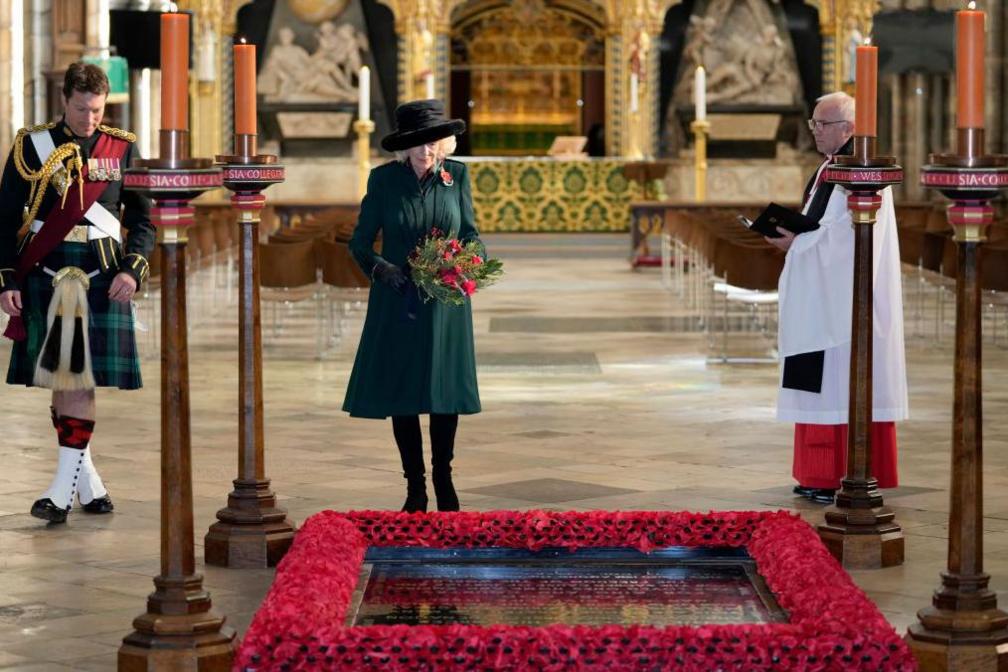
Flowers are often laid on the tomb, particularly around Remembrance Day
Listen to the best of BBC Radio London on Sounds and follow BBC London on Facebook, external, X, external and Instagram, external. Send your story ideas to hello.bbclondon@bbc.co.uk, external
Related topics
- Published5 November 2018
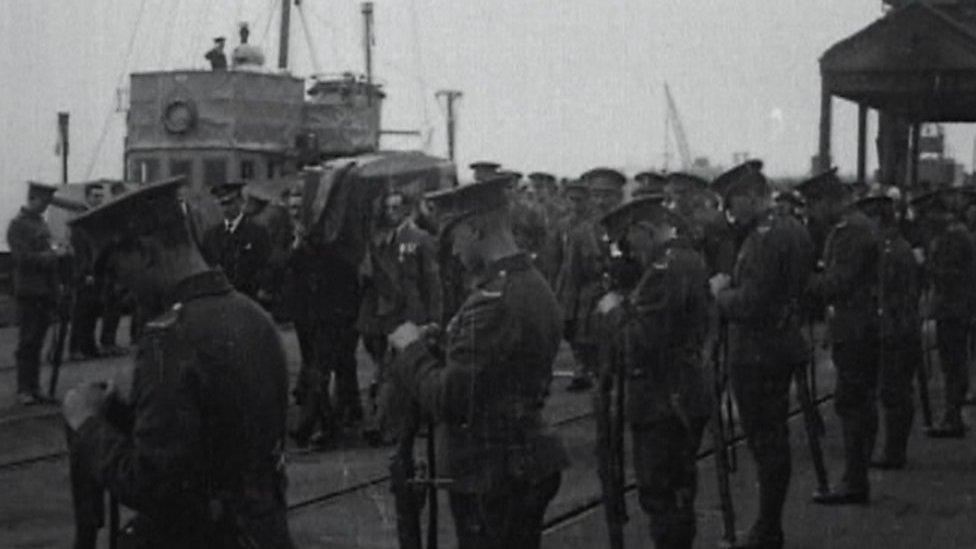
- Published20 May 2018
